On this page, you will discover a compilation of mammal species accompanied by captivating images and intriguing information. Included are diverse examples of mammalian species from various prominent groups.
Introduction to Mammals
Mammals, classified under the class Mammalia, are vertebrate animals. They possess distinct characteristics that differentiate them from other animal groups, such as the presence of fur or hair and the ability of female mammals to produce milk through mammary glands.
How Many Mammal Species Are There?
Approximately 6,400 living mammal species exist, classified into three primary groups: monotremes, marsupials (Metatheria), and placental mammals (Eutheria).
Monotremes vs. Marsupials vs. Placental Mammals
Monotremes are mammals that lay eggs, while both marsupials and placentals give birth to live young. Marsupials give birth at an early stage of development, and their young continue to grow and develop in a specialized pouch on the mother’s body.
Terrestrial, Aquatic, and Flying Mammals
The earliest mammals were land dwellers, and the majority of present-day mammals are terrestrial, inhabiting the land.
However, cetaceans, including whales, dolphins, and porpoises, returned to the sea and adapted to an entirely aquatic lifestyle. Other mammals evolved to inhabit aquatic or marine environments, such as seals, otters, hippos, and polar bears.
Bats, on the other hand, comprise the only group of mammals capable of powered flight, while some others, such as flying squirrels, marsupial gliders, and colugos, are proficient at gliding.
Below, you will find a compilation of notable mammal species representing the main mammalian groups.
Mammal Species List
1. African Bush Elephant
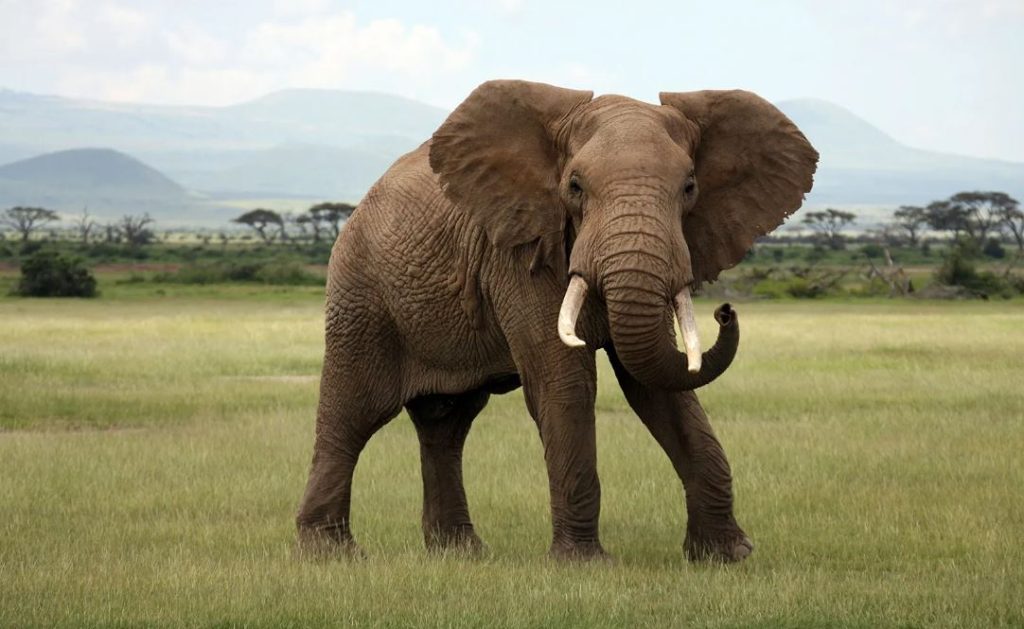
- Scientific name: Loxodonta Africana
- Mammal type: Proboscidea
- Conservation status: Endangered
The African bush elephant, also known as the African savanna elephant, holds the title for being the largest land mammal on Earth. A fully grown male African bush elephant can weigh up to 10.4 metric tonnes (22,928.08 lb.), making it the largest land animal.
Both male and female African bush elephants possess tusks, with males having significantly larger ones. These tusks are elongated teeth that grow from the upper jaw.
2. Blue Whale

- Scientific name: Balaenoptera musculus
- Mammal type: Cetacean
- Conservation status: Endangered
The blue whale, surpassing even the largest dinosaurs in size, holds the title for being the largest animal to have ever existed. This magnificent species can weigh up to 199 tonnes (219.3 short tons) and sustains itself on a diet primarily consisting of small crustaceans called krill.
3. Brown Rat

- Scientific name: Rattus norvegicus
- Mammal type: Rodent
- Conservation status: Least Concern
The brown rat, belonging to the Muridae family, is one of the largest members of this rodent family, which also encompasses rats, mice, and gerbils. With over 1,300 species, Muridae holds the distinction of being the largest rodent family.
Originating in China, the brown rat has managed to establish a presence on every continent except Antarctica. Its adaptability and competitive edge over native species
has allowed it to coexist with humans in various habitats.
Distinguishing features of the brown rat include its larger size compared to the related black rat, proportionally smaller eyes and ears, and a body length that exceeds its tail length.
4. Brown-Throated Sloth
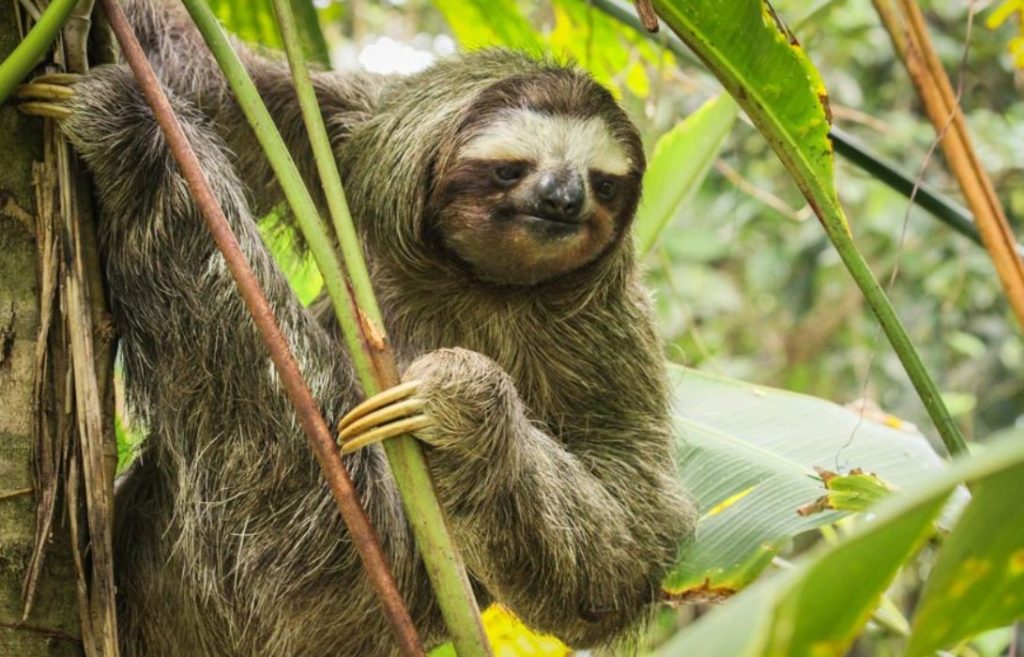
- Scientific name: Bradypus variegatus
- Mammal type: Xenarthra (superorder including sloths, anteaters, and armadillos)
- Conservation status: Least Concern
The brown-throated sloth is one of six existing species of sloths, specifically belonging to the three-toed sloth group. This arboreal mammal inhabits various forest types in Central and South America, including the Amazon Rainforest.
As a slow-moving creature, the brown-throated sloth spends a significant portion of its life sleeping. Its unique adaptations enable it to hang upside-down from branches for extended periods. Interestingly, the sloth’s fur provides a habitat for diverse species, including the sloth moth, Cryptoses choloepi.
5. Cat (Domestic)

- Scientific name: Felis catus
- Mammal type: Carnivoran
- Conservation status: Domestic
The domestic cat, believed to have originated from wildcats domesticated around 9,000 to 10,000 years ago, is a unique member of the cat family, Felidae. It is the only felid species that has achieved complete domestication.
Felidae is part of the order Carnivora, encompassing various mammals such as dogs, bears, weasels, seals, and related groups. Cats, with their retained “wildness,” showcase exceptional night vision and the ability to hear high-frequency sounds imperceptible to human ears.
While domestic cats make popular pets worldwide, their predatory nature poses a threat to local wildlife populations.
6. Cheetah
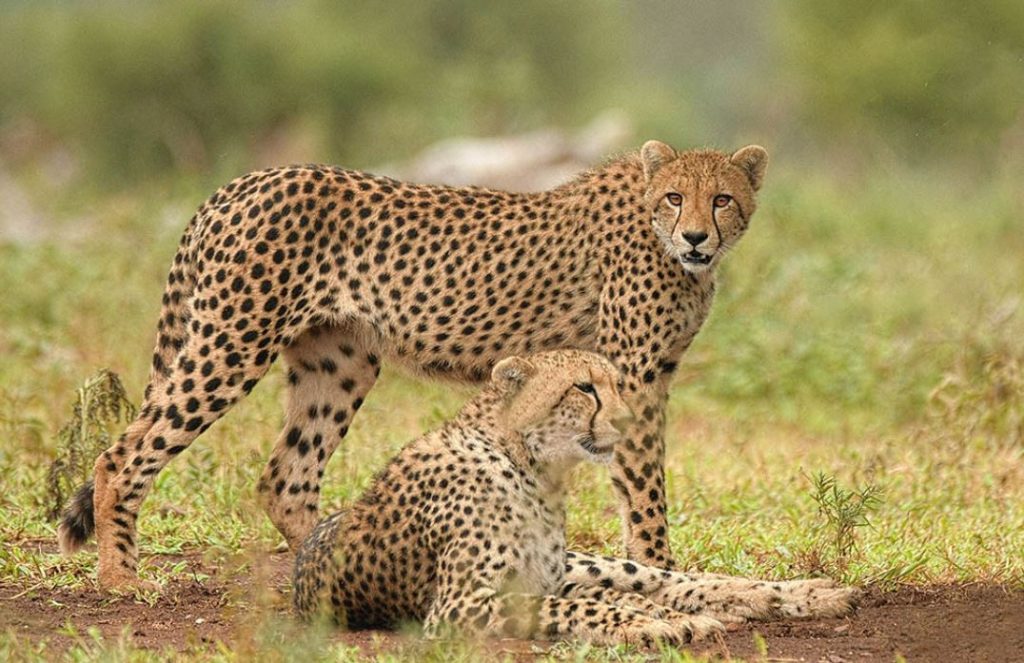
- Scientific name: Acinonyx jubatus
- Mammal type: Carnivoran
- Conservation status: Vulnerable
The cheetah holds the title for being the fastest land animal, capable of reaching speeds up to 75 mph (120 km/h). Its exceptional swiftness aids in capturing prey, predominantly consisting of fast-moving animals like antelopes and hares.
Distinguished by its yellow coat adorned with distinct black spots, the cheetah employs camouflage to blend with grasses and foliage. It belongs to the Felidae (cat) family, although it is not classified as a “big cat” as it does not fall within the subfamily Pantherinae or the genus Panthera.
The cheetah’s closest relatives include the puma and the jaguarundi.
7. Chimpanzee

- Scientific name: Pan troglodytes
- Mammal type: Primate
- Conservation status: Endangered
The chimpanzee, a primate inhabiting the forests of central Africa, shares approximately 98% of its genetic makeup with humans, making it our closest living relative. It belongs to the Hominidae family, which includes humans, bonobos, gorillas, and orangutans.
Hominidae is part
of the order Primates, which encompasses a diverse range of mammals such as monkeys, gibbons, lemurs, lorises, and other related animals.
Chimpanzees are among the few animals known to utilize tools. They have been observed using sticks and stones for various purposes, including capturing and preparing food.
Unfortunately, chimpanzees face endangerment primarily due to illegal poaching. Despite being protected, they are targeted by local hunters for their meat.
8. Common Bottlenose Dolphin

- Scientific name: Tursiops truncatus
- Mammal type: Cetacean
- Conservation status: Least Concern
The common bottlenose dolphin is one of the well-known members of the Delphinidae family, also referred to as “oceanic dolphins.” Delphinidae is the largest dolphin family, comprising 30 species.
Belonging to the group of mammals known as cetaceans, which includes whales and porpoises, dolphins are remarkable marine mammals. While they originated from land ancestors, they have fully adapted to an aquatic lifestyle. With streamlined, fish-like bodies, cetaceans rely on lungs and must periodically surface to breathe.
Dolphins possess remarkably large brains relative to their body size and exhibit high intelligence, engaging in teamwork, teaching, learning, and problem-solving.
9. Dog (Domestic)

- Scientific name: Canis lupus / Canis familiaris
- Mammal type: Carnivoran
- Conservation status: Domestic
Biologists hold differing opinions regarding the domestic dog’s classification, with some considering it a subspecies of the gray wolf (Canis lupus) and others recognizing it as a distinct species (Canis familiaris).
Originating from wolves domesticated over 15,000 years ago, dogs have become faithful companions and are kept as pets in many regions worldwide. They also serve in various roles such as guard dogs, guide dogs, and sniffer dogs.
Dogs belong to the Canidae family, which includes wolves, foxes, jackals, and other related animals. Canidae, alongside felids, weasels, bears, seals, and other groups, falls within the order Carnivora.
10. European Hedgehog
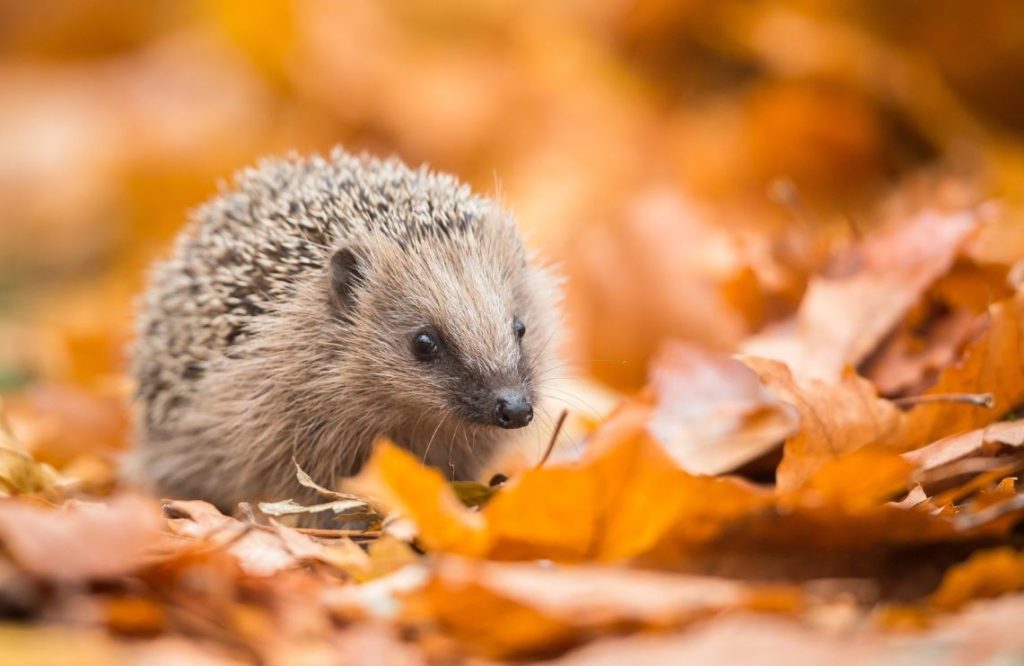
- Scientific name: Erinaceus europaeus
- Mammal type: Member of order Eulipotyphla
- Conservation status: Least Concern
The European hedgehog is one of 17 hedgehog species found worldwide. It inhabits Western Europe and much of Scandinavia, with a global conservation status of Least Concern. However, the population of European hedgehogs has rapidly declined in the UK.
Hedgehogs, part of the Erinaceidae family, possess a protective coat of sharp spines, which are modified hairs. When threatened, they curl into a ball, using their spines as defense against predators.
11. Harbor Seal
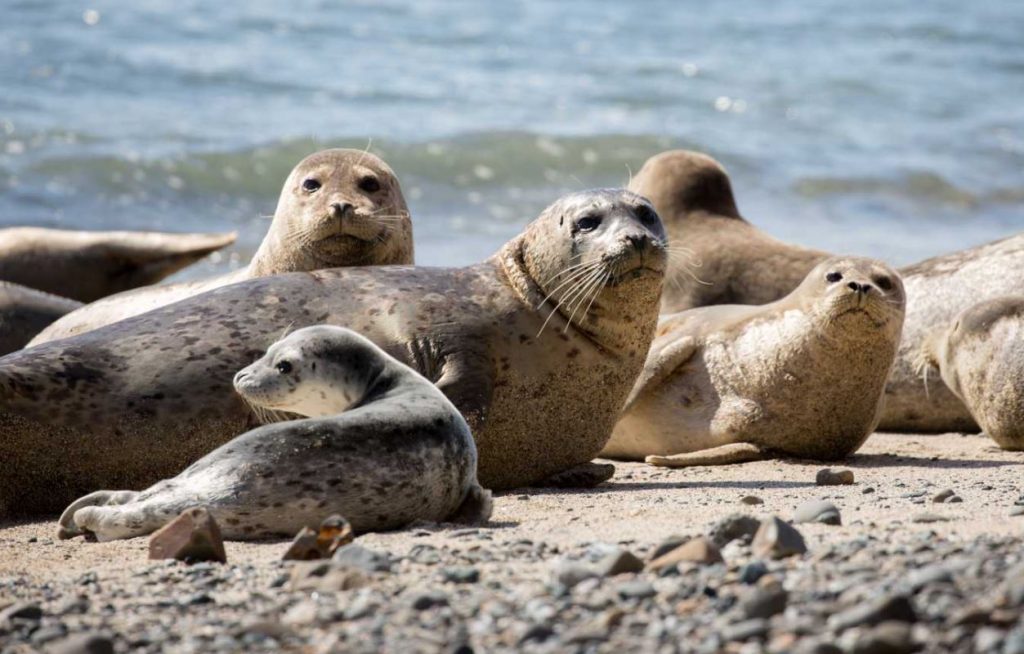
- Scientific name: Phoca vitulina
- Mammal type: Carnivoran (Pinniped)
- Conservation status: Least Concern
Seals can be divided into two primary groups: earless seals, also known as true seals (family Phocidae), and eared seals or sea lions (family Otariidae).
Harbor seals belong to the family Phocidae, known as earless seals or true seals. These marine mammals inhabit temperate and Arctic coastlines across the Northern Hemisphere, as well as estuaries and rivers. Their diet mainly consists of fish, crustaceans, and mollusks.
Seals, along with walruses, belong to the group of mammals called pinnipeds, characterized by their fin-like flippers and streamlined bodies. Pinnipeds are a subgroup of the order Carnivora.
Despite their aquatic adaptation, seals still rely on lungs for breathing and must come to the surface periodically. The harbor seal’s unique anatomy allows it to move clumsily on land, using its front flippers to pull itself along.
12. Hippopotamus
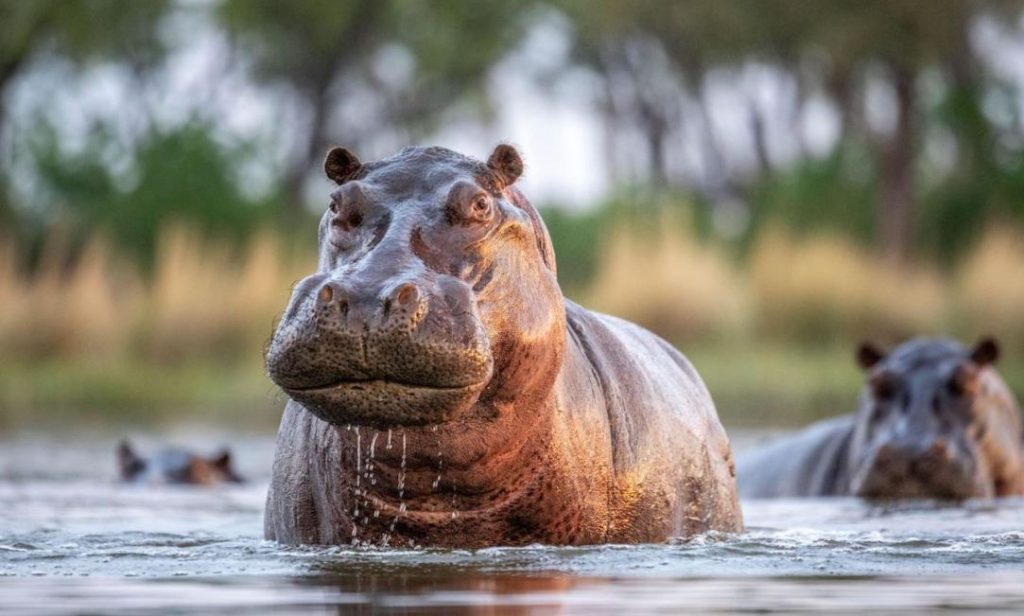
- Scientific name: Hippopotamus amphibius
- Mammal type: Even-Toed Ungulate (member of order Artiodactyla)
- Conservation status: Vulnerable
Known as the “hippo,” this remarkable creature is not only one of the world’s most recognizable mammals but also one of the largest. Only elephants and some rhinos surpass its size.
The name “hippopotamus” derives from ancient Greek, meaning “river horse,” reflecting its semi-aquatic lifestyle. Hippos spend the majority of their day bathing in water or mud, emerging at dusk when temperatures cool down.
A smaller species, the pygmy hippo, inhabits Africa’s rainforests.
Closely related to cetaceans such as whales and porpoises, hippos belong to the family Hippopotamidae.
13. Horse
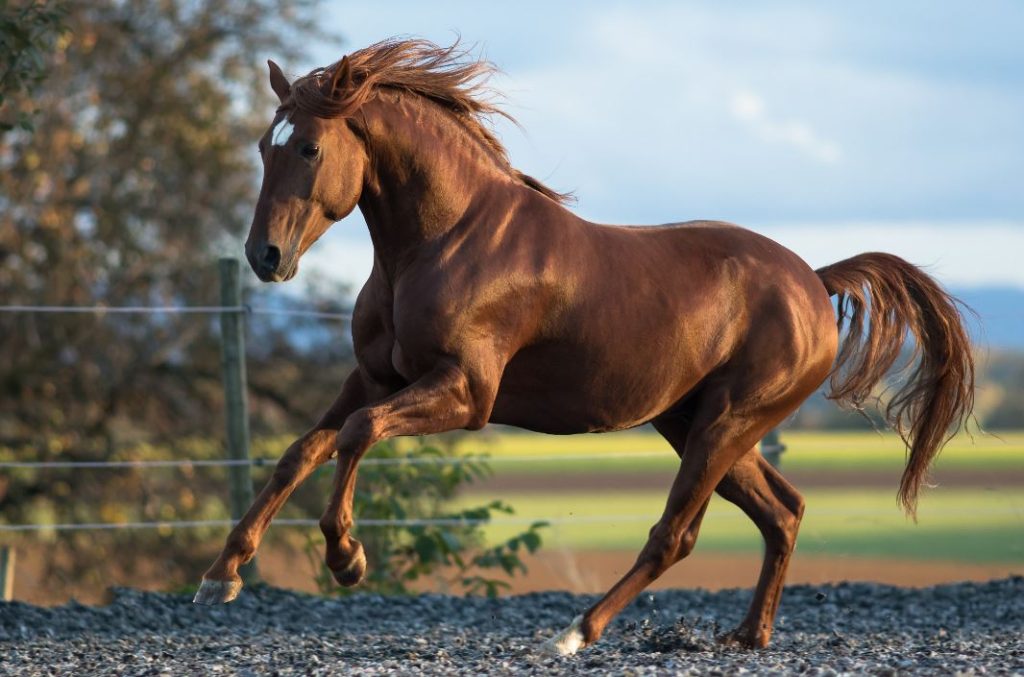
- Scientific name: Equus caballus
- Mammal type: Odd-Toed Ungulate (member of order Perissodactyla)
- Conservation status: Domestic
Horses, hoofed mammals belonging to the order Perissodactyla, are known as “odd-toed ungulates” due to their odd number of weight-bearing toes. Other members of this group include rhinos and tapirs.
The horse family, Equidae, encompasses not only horses but also donkeys and zebras.
Domestication of horses dates back around 6,000 years, and they have played a significant role in human history as a common means of transportation.
Herbivorous and built for running, horses hold the record for the highest recorded speed attained by a land mammal, reaching 43.97 mph (70.76 km/h).
14. Human

- Scientific name: Homo sapiens
- Mammal type: Primate
- Conservation status: n/a
Humans, highly intelligent members of the great ape family Hominidae, are our own species. Sharing around 98% of our genes with chimpanzees and bonobos, humans first appeared approximately 300,000 years ago during the Pleistocene epoch.
Inhabiting every continent, humans have explored the oceans and even ventured into space.
15. Little Brown Bat
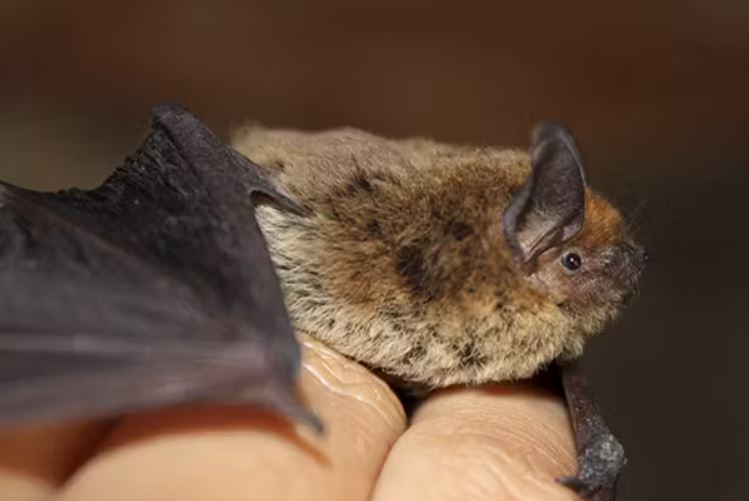
- Scientific name: Myotis lucifugus
- Mammal type: Bat (member of order Chiroptera)
- Conservation status: Endangered
Bats, members of the order Chiroptera, comprise the second-largest mammalian order after rodents (Rodentia). Bats are the only mammals capable of true flight, utilizing powered, flapping flight.
Within the order Chiroptera, there are two main types of bats: microbats and megabats. Microbats, like the little brown bat, possess the ability to echolocate, using sound waves to navigate their surroundings and locate prey. Most microbats are insectivores, playing a crucial role in controlling insect populations.
The little brown bat is a small species found in North America. With a wingspan of 8 to 10 inches (20.3 to 25.4 cm), it is often observed flying low near forests and bodies of water, where it feeds on aquatic insects.
Unfortunately, the little brown bat population has been severely affected by white-nose syndrome, a fungal disease that has caused a significant decline in their numbers. Additionally, wind turbines pose a threat to many bat species, including the little brown bat.
16. North American Porcupine

- Scientific name: Erethizon dorsatum
- Mammal type: Rodent
- Conservation status: Least Concern
The North American porcupine, North America’s second-largest rodent after the beaver, inhabits various regions of Canada, the United States, and Mexico. This slow-moving mammal is arboreal, spending much of its time in trees, and is predominantly active at night.
Porcupines, part of the family Erethizontidae, possess a coat of sharp quills as a defense mechanism. When threatened, they raise their quills, creating an intimidating display.
Interestingly, the North American porcupine is not closely related to the Old World porcupines found in Africa, Asia, and Europe. The similarities in their spined appearances are a result of convergent evolution.
17. Northern Flying Squirrel
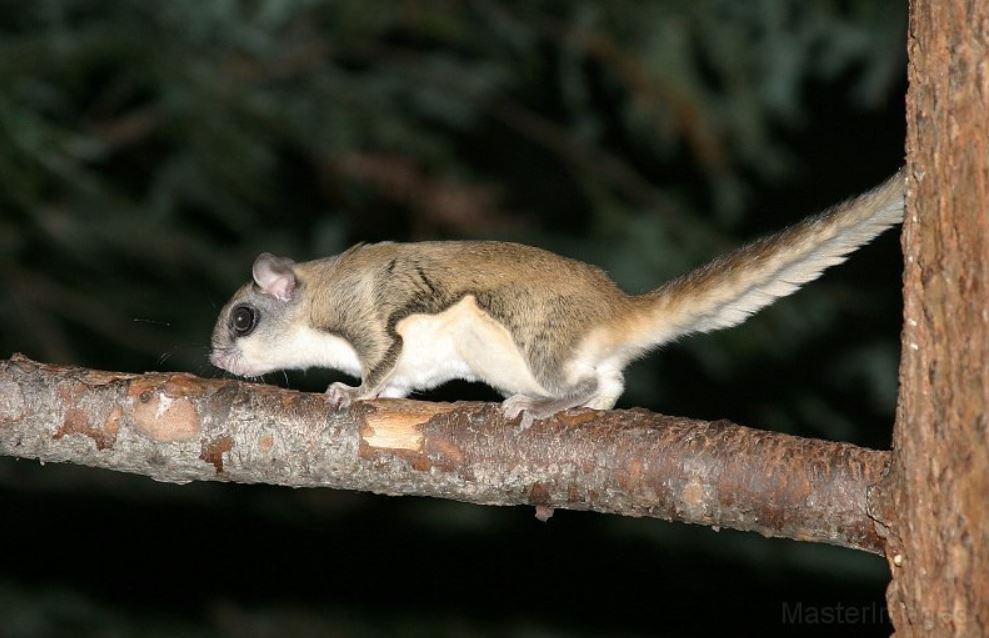
- Scientific name: Glaucomys sabrinus
- Mammal type: Rodent
- Conservation status: Least Concern
While bats are the only mammals capable of true flight, several mammalian groups have evolved the remarkable ability to glide. Among them are flying squirrels, comprising around 50 species within the squirrel family, Sciuridae.
The northern flying squirrel is one of three flying squirrel species found in North America. These small mammals belong to the genus Glaucomys.
With specialized adaptations, including a patagium (a furry membrane) that extends between their limbs, flying squirrels can glide through the air. They are typically active at night and rely on their remarkable gliding ability to navigate between trees.
18. Platypus
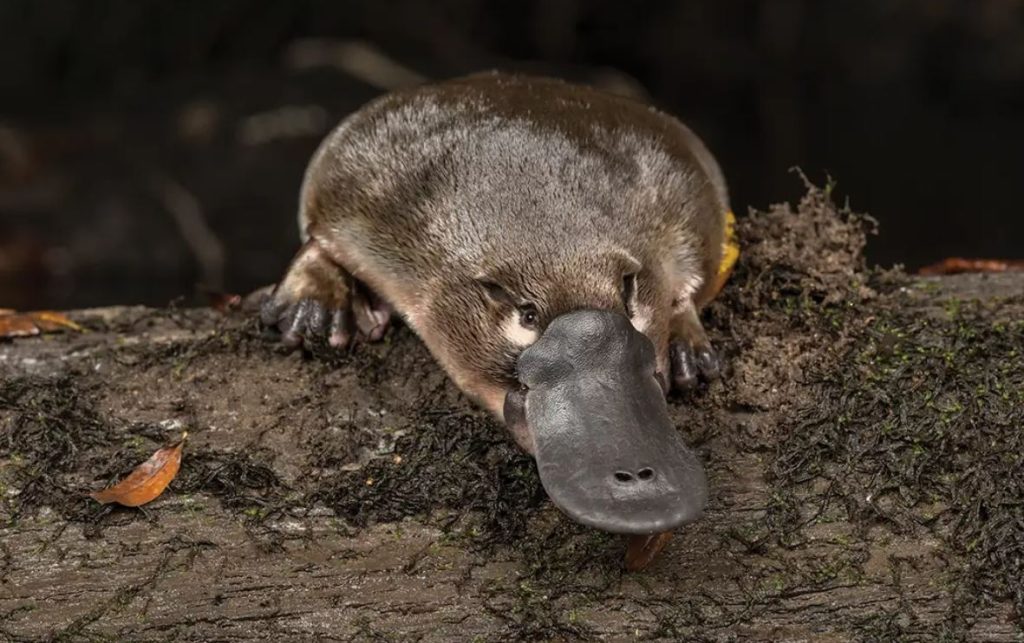
- Scientific name: Ornithorhynchus anatinus
- Mammal type: Monotreme
- Conservation status: Near Threatened
The platypus, along with the four species of echidna, belongs to the order Monotremata. Monotremes are unique mammals that lay eggs rather than giving birth to live young.
Found in streams and freshwater bodies of eastern Australia, the platypus is a fascinating creature. It possesses a duck-like bill equipped with electroreceptors, enabling it to sense the movements of its prey underwater. Monotremes, including the platypus, are the only land mammals capable of electroreception.
The platypus is a semi-aquatic species that forages for worms, insect larvae, and small crustaceans. Its intriguing appearance and fascinating characteristics have made it an iconic symbol of Australia’s wildlife.
19. Polar Bear
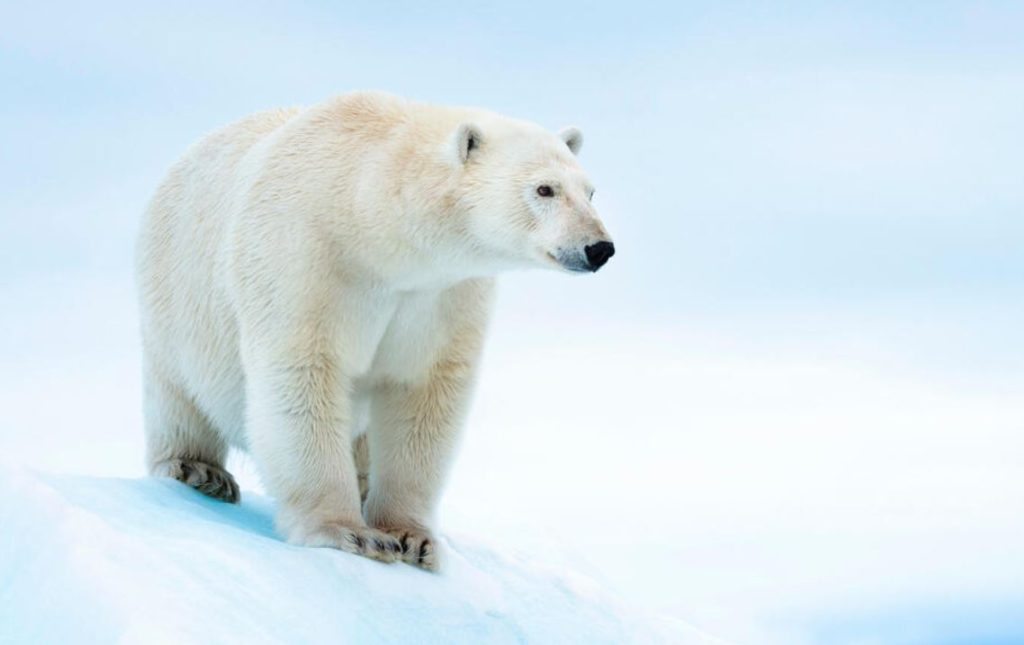
- Scientific name: Ursus maritimus
- Mammal type: Carnivoran
- Conservation status: Vulnerable
The polar bear, renowned for its striking white fur, is the largest member of the bear family, Felidae. While most wild tigers are found in southern Asia, polar bears inhabit the Arctic regions of North America and Europe.
Well-adapted to its icy habitat, the polar bear is considered a marine mammal as it spends much of its time on sea ice or in the water. It has a carnivorous diet primarily consisting of seals.
Despite its global recognition, the wild population of polar bears is under significant threat. Poaching and habitat loss due to climate change pose significant challenges to the survival of this magnificent species.
20. Red Kangaroo
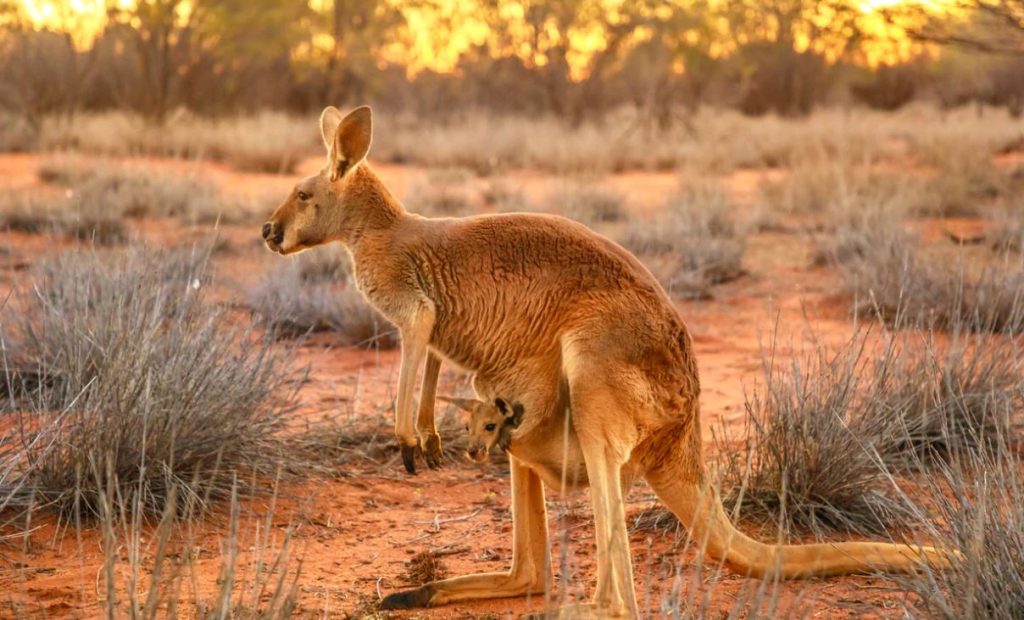
- Scientific name: Osphranter rufus
- Mammal type: Marsupial
- Conservation status: Least Concern
The red kangaroo holds the distinction of being not only the largest kangaroo species but also the largest marsupial and the largest mammal in Australia. With some large males exceeding 2 meters (6.56 feet) in body length, the red kangaroo showcases remarkable size. Male red kangaroos are red-brown in color, while females, considerably smaller, exhibit a gray-blue hue.
These iconic marsupials are found in arid regions across much of Australia, including grasslands, savannas, deserts, and woodlands. They are herbivorous, primarily feeding on grasses and flowers.
21. Short-Beaked Echidna
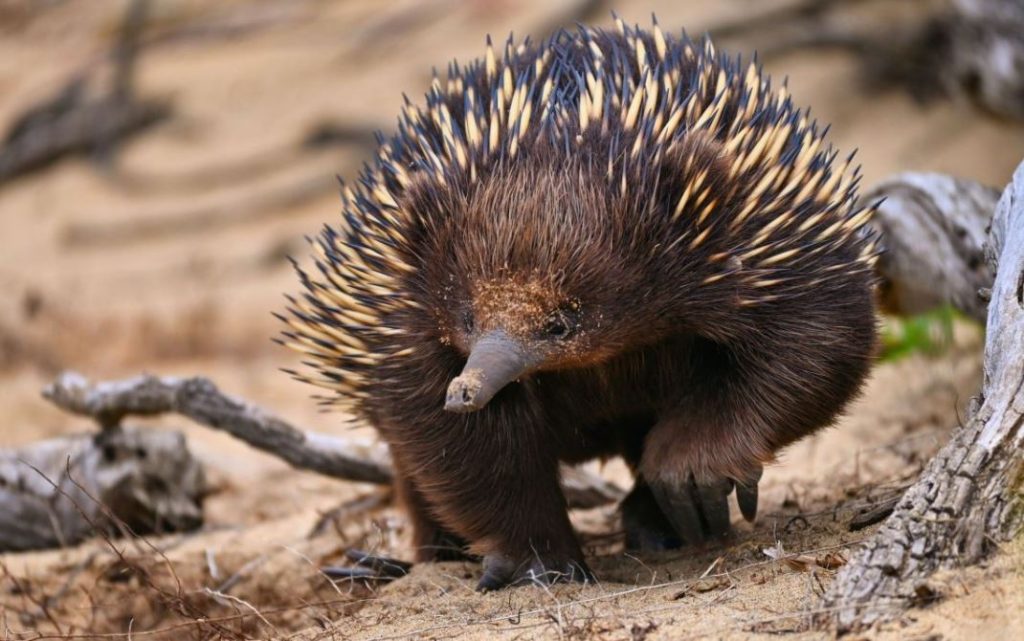
- Scientific name: Tachyglossus aculeatus
- Mammal type: Monotreme
- Conservation status: Least Concern
One of the four species of echidnas, the short-beaked echidna is exclusively found in Australia, as well as in New Guinea alongside its fellow echidna species.
As an insectivore, the short-beaked echidna feeds primarily on ants and termites, capturing them with its long, sticky tongue. Equipped with robust front limbs and sturdy claws, it utilizes its impressive digging abilities both for burrowing and accessing insect nests.
Like all monotremes, the short-beaked echidna lays eggs, distinguishing it from other mammalian groups that give birth to live young.
22. Springbok
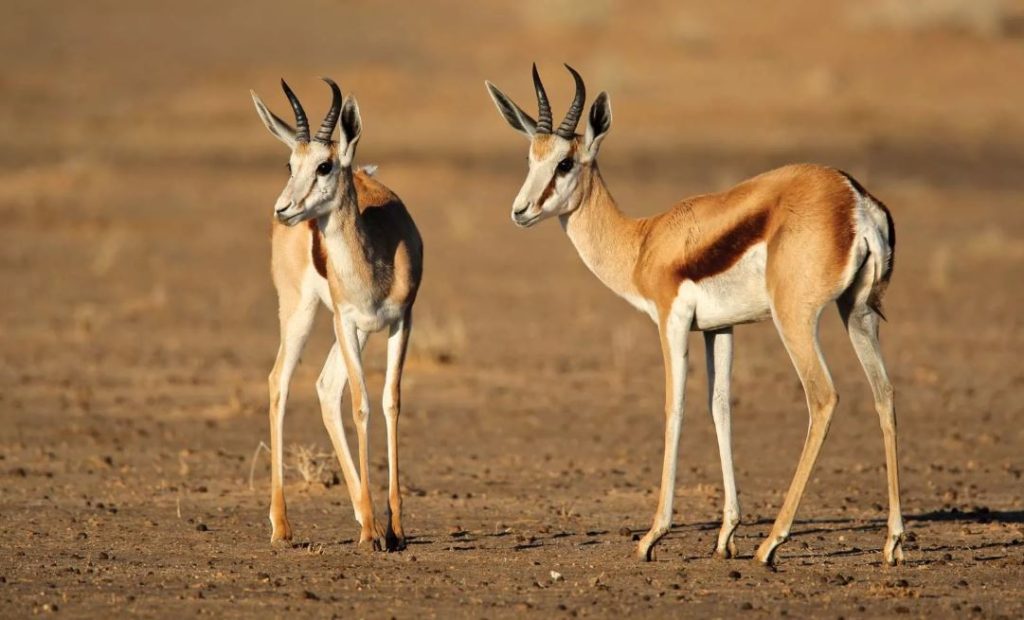
- Scientific name: Antidorcas marsupialis
- Mammal type: Even-Toed Ungulate (member of order Artiodactyla)
- Conservation status: Least Concern
The springbok, a captivating species of antelope, roams the vast landscapes of southwestern Africa. Renowned for its unique “pronking” behavior, the springbok repeatedly leaps into the air, showcasing its bright white rump. This display is believed to signal the animal’s fitness and make it appear more challenging to predators.
As the national animal of South Africa, the springbok holds cultural significance, even lending its name to the country’s rugby team, known as the “Springboks.”
23. Tiger

- Scientific name: Panthera tigris
- Mammal type: Carnivoran
- Conservation status: Endangered
The tiger, the largest member of the cat family Felidae, captivates with its majestic presence. While most wild tigers reside in southern Asia, a separate population thrives in Siberia.
These magnificent creatures possess the ability to adapt to a variety of habitats, from tropical forests to boreal forests.
Despite being one of the most iconic and recognizable animals, the wild tiger population faces a critical threat. With less than 3,200 adult individuals remaining, tigers are classified as endangered due to rampant poaching and habitat destruction.
24. Vervet Monkey
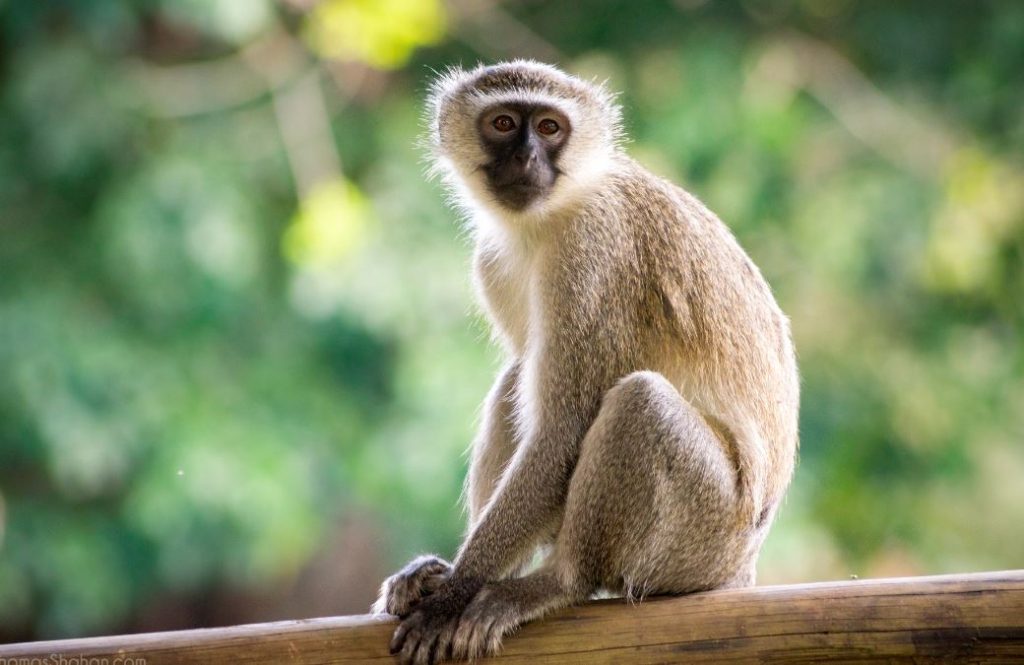
Scientific name: Chlorocebus pygerythrus
Mammal type: Primate
Conservation status: Least Concern
The vervet monkey inhabits the diverse landscapes of eastern Africa, ranging from Ethiopia to South Africa. These primates can be found in savannas, forests, and woodlands, often close to rivers.
Belonging to the old world monkey family Cercopithecidae, vervet monkeys are more closely related to apes than to the New World monkeys found in the Americas. Living in troops of 10 to 38 individuals, female vervet monkeys remain with their family groups throughout their lives, while males leave to join neighboring groups upon reaching maturity.
25. Virginia Opossum
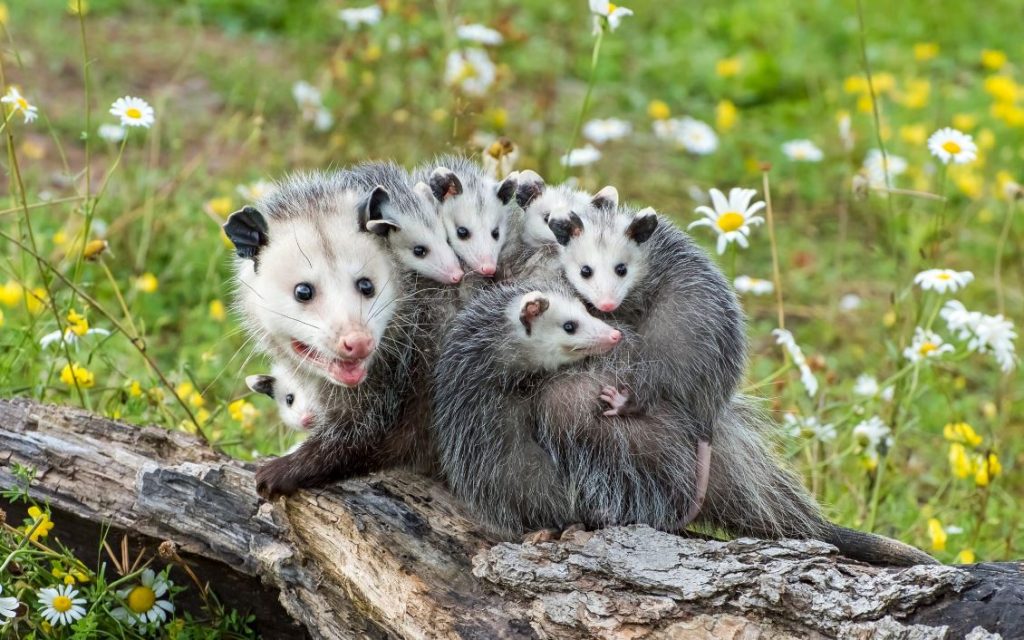
- Scientific name: Didelphis virginiana
- Mammal type: Marsupial
- Conservation status: Least Concern
While marsupials are primarily associated with Australasia, the Virginia opossum stands as a testament to their presence in the Americas. Ranging from Costa Rica to Canada, this solitary and nocturnal marsupial is the only species of its kind found in the United States and Canada.
With a varied diet including insects, small vertebrates, eggs, and carrion, the Virginia opossum thrives in diverse habitats such as forests, shrublands, and even urban environments. Interestingly, when threatened, the opossum adopts a unique defense strategy of “playing possum,” feigning death to deter potential predators.
These diverse mammals represent a fraction of the incredible diversity found within the animal kingdom. Each species holds its own unique adaptations and plays a vital role in maintaining the balance of their respective ecosystems. Exploring the world of mammals unveils a wealth of wonder and appreciation for the remarkable creatures that share our planet.
